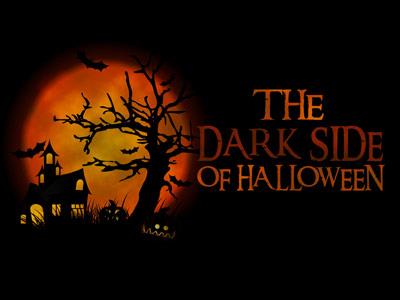-
Scariest Story Of All
Contributed by Larry Turner on Oct 28, 2016 (message contributor)
Summary: With all the horror stories played out at Halloween, the scariest story of all is found in the Bible.
Did you enjoy the music that was playing when you came in? Were you looking over your shoulders for Jason or Michael Myers? Was Freddy Krugger stalking you? All of these of course were characters from famous horror films.
We love to be frightened. Last week we went to Scarowinds on Friday night. It was packed. People and monsters intermingling in the most frightening atmosphere imaginable. Saturday afternoon we went back to Carowinds for the kids Pumpkin Patch celebration. For those who don’t know, Carowinds closes at 5:30 and reopens at 7:00 as Scarowinds. As we were leaving, I noticed the front gate was already packed with people who were willing to stand in line for an hour and a half to get in. They had to love horror a whole lot.
I discovered this week that in the list of the 10 top grossing low budget movies, four were horror flicks. “Halloween” was produced on a budget of $325,000, made $70 million for a return of 11,000%. The original 1950s “Night of the Living Dead” was produced on a budget of $114,000, made $47 million for a return of 13,000 %. “The Blair Witch Project” was produced on a budget of $600,000, made $248.3 million for a return of 20,000%. And the number one film of all, not just horror, was “Paranormal Activity” which was produced on a budget of just $15,000. It brought in $197 million for a return of 665,000%. I guess being scared counts for something.
Of course, scary movies and themes do much better around this time of year. Halloween is known as the devil’s holiday along with ghosts and witches. But where did it start? Well, I am glad you asked.
Halloween’s origins date back to the ancient Celtic festival of Samhain (pronounced sow-in). The Celts, who lived 2,000 years ago in the area that is now Ireland, the United Kingdom and northern France, celebrated their new year on November 1. This day marked the end of summer and the harvest and the beginning of the dark, cold winter, a time of year that was often associated with human death. Celts believed that on the night before the new year, the boundary between the worlds of the living and the dead became blurred. On the night of October 31 they celebrated Samhain (sow-in), when it was believed that the ghosts of the dead returned to earth. In addition to causing trouble and damaging crops, Celts thought that the presence of the otherworldly spirits made it easier for the Druids, or Celtic priests, to make predictions about the future, thus the birth of fortune-tellers.
To commemorate the event, Druids built huge sacred bonfires, where the people gathered to burn crops and animals as sacrifices to the Celtic gods. During the celebration, they wore costumes, typically consisting of animal heads and skins, and attempted to tell each other’s fortunes. When the celebration was over, they re-lit their hearth fires in their homes, which they had extinguished earlier that evening, from the sacred bonfire to help protect them during the coming winter.
By 43 A.D., the Roman Empire had conquered the majority of Celtic territory. In the course of the four hundred years that they ruled the Celtic lands, two festivals of Roman origin were combined with the traditional Celtic celebration of Samhain (sow-in). The first was Feralia, a day in late October when the Romans traditionally commemorated the passing of the dead. The second was a day to honor Pomona, the Roman goddess of fruit and trees. The symbol of Pomona is the apple, thus explains the tradition of “bobbing” for apples.
On May 13, 609 A.D., Pope Boniface IV dedicated the Pantheon in Rome in honor of all Christian martyrs, and the Catholic feast of All Martyrs Day was established in the Western church. Pope Gregory III later expanded the festival to include all saints as well as all martyrs, and moved the observance from May 13 to November 1.
In 1000 A.D., the church would make November 1 All Souls’ Day, a day to honor the dead. It is widely believed today that the church was attempting to replace the Celtic festival of the dead with a related, but church-sanctioned holiday. All Souls Day was celebrated similarly to Samhain (sow-in), with big bonfires, parades, and dressing up in costumes as saints, angels and devils. The All Saints Day celebration was also called All-hallows or All-Hallowmas. And the night before began to be called All-hallows Eve and, eventually, Halloween.
Winter was an uncertain and frightening time. Food supplies often ran low and, for the many people afraid of the dark, the short days of winter were full of constant worry. On Halloween, when it was believed that ghosts came back to the earthly world, people thought that they would encounter ghosts if they left their homes. To avoid being recognized by these ghosts, people would wear masks when they left their homes after dark so that the ghosts would mistake them for fellow spirits. On Halloween, to keep ghosts away from their houses, people would place bowls of food outside their homes to appease the ghosts and prevent them from attempting to enter.

 Sermon Central
Sermon Central



